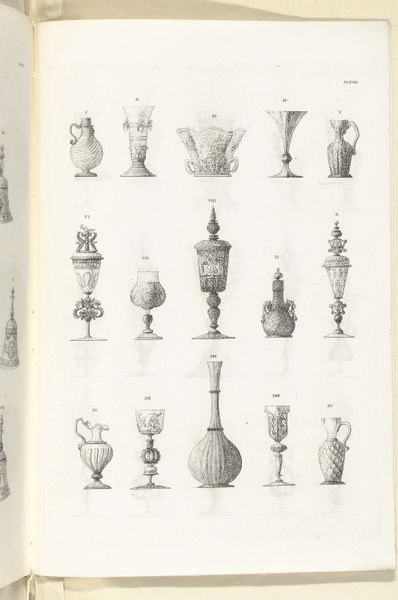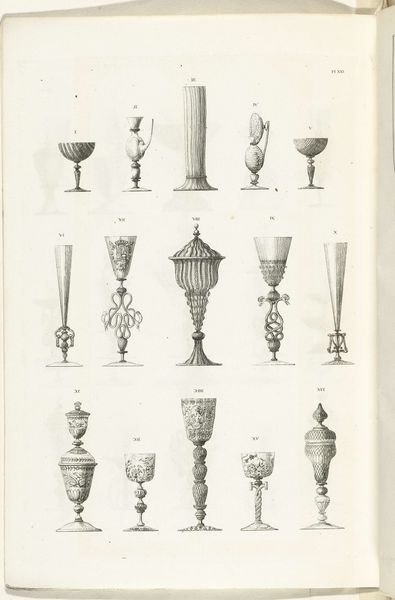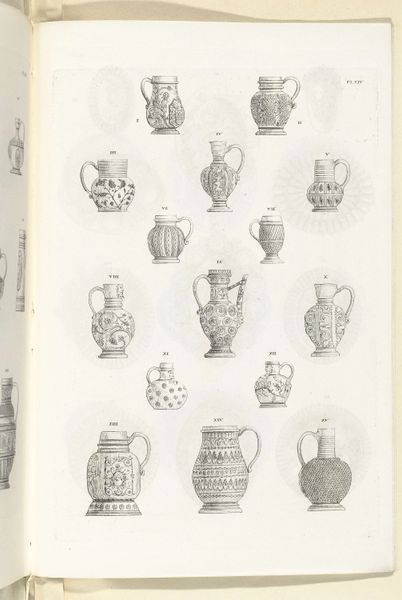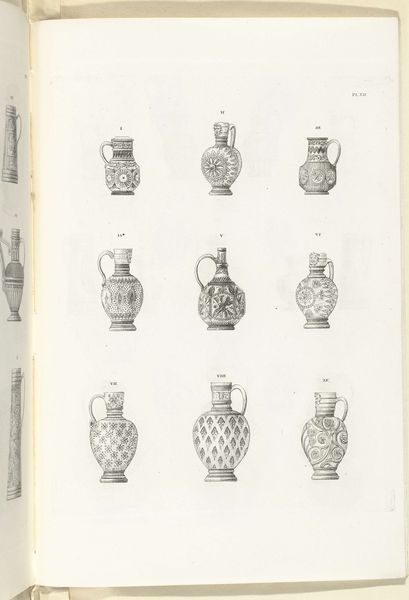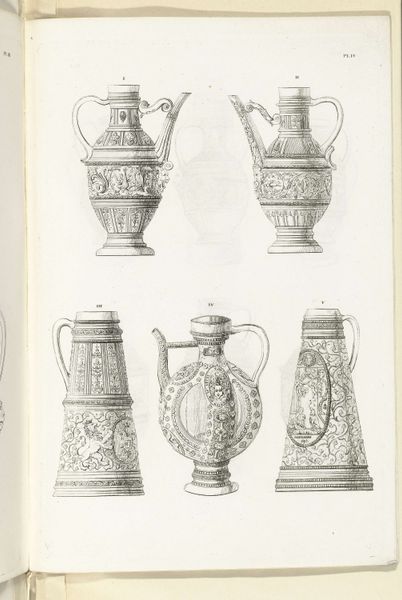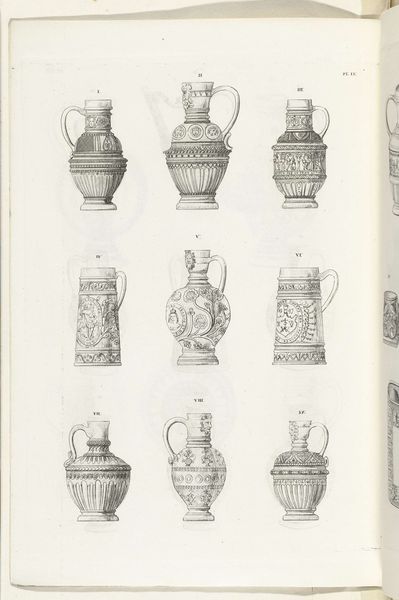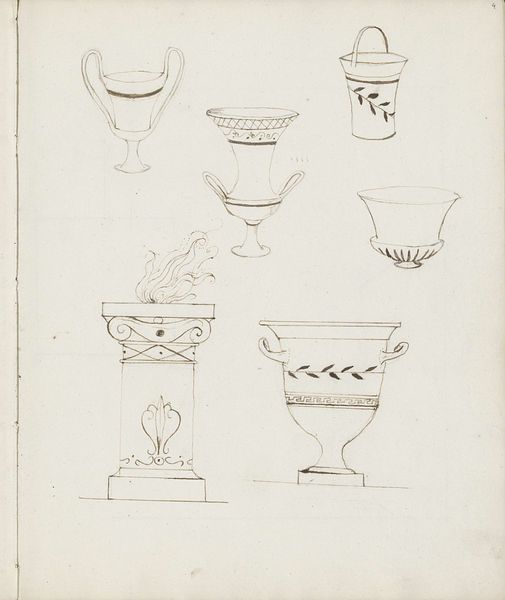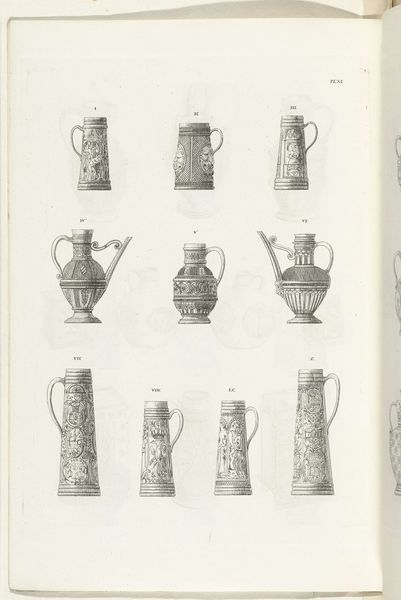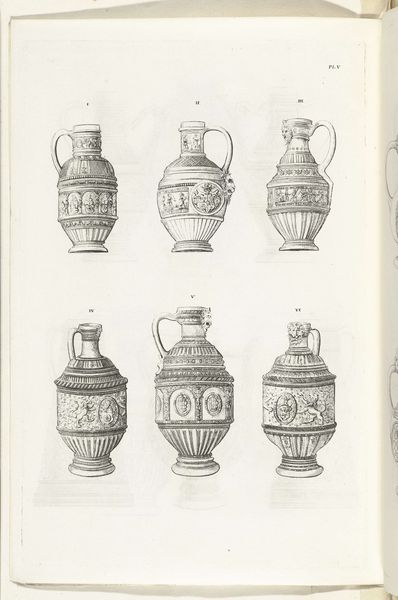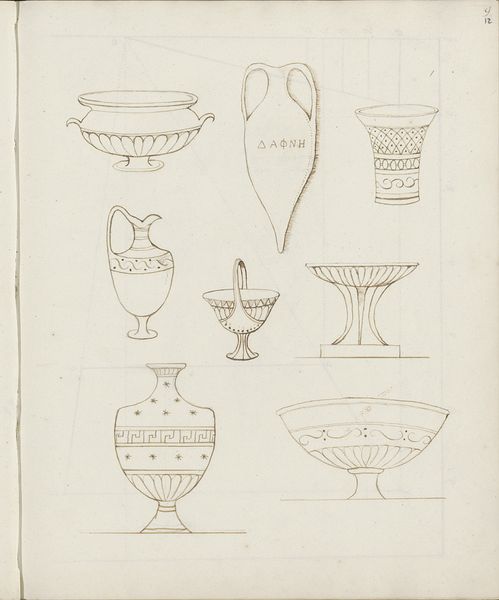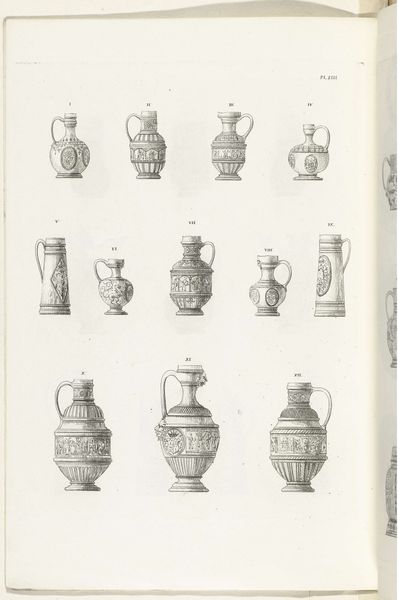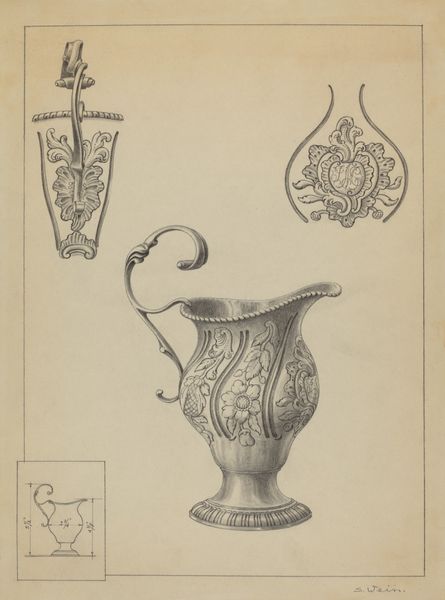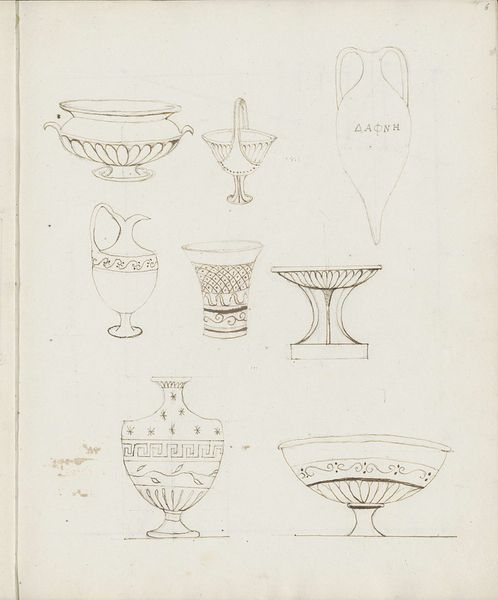
drawing, print, etching, glass, ink, engraving
#
drawing
# print
#
etching
#
glass
#
ink
#
decorative-art
#
engraving
Dimensions: height 227 mm, width 163 mm
Copyright: Rijks Museum: Open Domain
Curator: This etching by Charles Onghena, entitled "Kelken en pronkbekers, plaat XX," or Chalices and display cups, plate XX, dates from the late 1820s and showcases an array of elaborate glassware designs. Editor: Wow, it’s like a museum of impossible goblets! Some of these are so ornate, I can't imagine actually drinking out of them. It's more of a fantastical catalog than a practical guide. Curator: Exactly! Consider the historical context. Sumptuary laws, dictating who could own and display certain goods, had a real impact on consumption. Glassware like this became symbolic not just of wealth, but of social standing, power and identity. Onghena’s etching captures that complex relationship between objects and society. Editor: I’m getting a sense of both aspiration and restriction from this. Like, look at chalice XI— it's trying so hard! The over-the-top embellishment feels like a statement about the owner's ambitions. It also has a very clear male/female aesthetic—rigid lines mixed with very organic/sexual curves. I'm intrigued! Curator: The craftsmanship and artistry involved in creating these goblets served to assert status and display specialized technical abilities. Onghena’s technique, the precision of the etching and engraving, is meticulous; you see every curve and detail rendered with care. Editor: Agreed. It’s almost clinical in its detail. Looking at it from a modern angle, it makes me question what objects *we* use to signify wealth today. It all just makes you think of identity as a social performance, right? What props are in *my* personal play? Curator: That's a vital point. Our connection to objects is laden with these layered narratives of class, gender, and aspiration. Examining these historical artifacts prompts us to think critically about contemporary consumerism. Editor: It's funny to think that maybe one day someone will be studying *our* belongings with the same mixture of awe and "what were they thinking?". Curator: Precisely! Thank you for engaging, through your intuitive expressions, with these intersectional dialogues! Editor: The pleasure was all mine! This exercise helps underscore the importance of critically considering objects through various contemporary lenses.
Comments
No comments
Be the first to comment and join the conversation on the ultimate creative platform.
